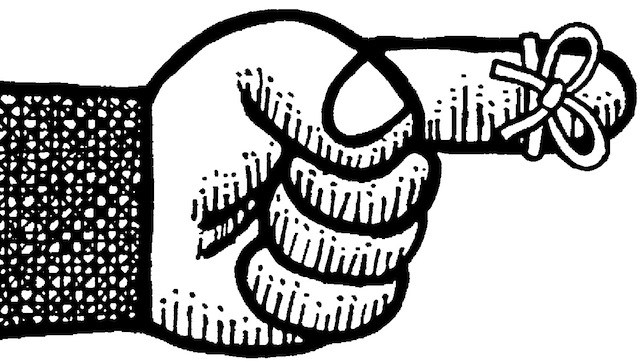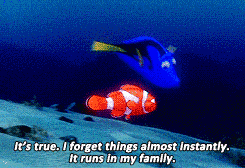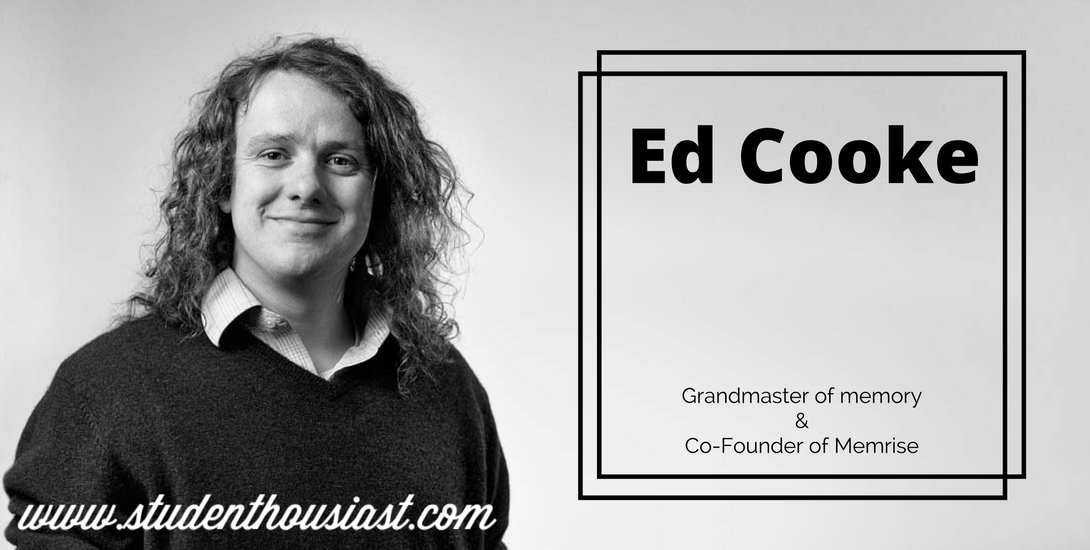Memorize Anything: The Secrets, Hidden Techniques and Tricks that Make You Memorize Like a Champ

Today's blog is a big one: MEMORY. As you and everyone else knows, we forget all kinds of things. Whether it's our keys or our grocery list, it's always freaking annoying.
So what exactly are we going to do about this? Well... to start off, I'll give you some context. Memory is something that has been studied for an incredibly long time, going back to the Old Greeks [7. Socrates and the Loci method (google it)] There are a number of extraordinary people in this world that have condensed centuries of information about memory techniques and tricks into so- called 'mnemonics'; meaning memory-techniques.
These memory athletes are SUPER impressive. To show off their skills and have a little competition, just to see who's the best, they have created memory championships.

In these tournaments, judges (The World Memory Sport Council) test mental athleticism with a number of exercises. To give some examples:
• Memorize the order of 10 decks of cards in 60 minutes.
• Memorize 1,000 random digits in 60 minutes.
• Memorize the order of one deck of cards in less than two minutes.
Okay, I know, right now you're thinking to yourself "There's simpy NO WAY that's possible". And that's where you're wrong buddy. Some of hese mental-athletes train full-time to pull it off, but it certainly is possible.
Once they do it, they can claim the title of 'Grand Master of Memory'. A title less than 100 people have acquired so far.
Ed Cooke, founder of Memrise, first successfully completed the trifecta of tests when he was only 23! He later came to international attention when he coached journalist Joshua Foer from ground zero to U.S. Memory Champion in one year, a story chronicled by Foer in his best-selling book 'Moonwalking with Einstein'. To win that championship, Foer had to memorize 120 random digits in five minutes, successfully commit to memory the first and last names of 156 strangers within 15 minutes, and lastly memorize a shuffled deck of cards in less than two minutes.

So why not give this a shot? You don't have to memorize a deck of cards, or a sequence of numbers. Just use the techniques these athletes use, and next time you won't have any trouble to remember the names of the people you meet, the bread and butter on the grocery list and the chinese characters for your test next week.
So let's start with the basics first, then build onwards from that.
Okay, so the way our brain is wired, there are certain things we tend to remember better or more vividly. For example, how come you can remember the score of your favorite football team's last 15 matches and name all of their players by name, without breaking a single sweat? While remembering a few names of famous philosophers for philosophy class, or recalling some groceries when you forget your grocery list, always seems to be such an impossible task...
There's science and a whole human history that can explain this. We humans have a natural tendency to remember certain things very well and others only with huge effort.
Lucky for you, all our brains are wired almost the same way. Meaning that you're not special, nor the only one with this problem. And the techniques I'm about to disclose, that help you improve your memory, luckily apply to all of us.
Alright, let's dive in.
Our brains all evolved to code and interpret complex stimuli. Things such as images, colors, structures, sounds, smells, tastes, touch, positions, emotions and language. We use all of these to make sophisticated models of the world we live in. And our memories normally store all of these very effectively and efficiently, to reduce energy consumption.
Unfortunately, in our daily lives there is a lot of information that we want to remember presented differently - as text printed on page. Our brains do not easily encode written information, making it quite difficult to remember. To be able to commit these kinds of stimuli to memory more effectively, I have set up the next section:
Effective Encoding

Encoding, meaning "the translation from the abstract to the concrete", is a powerful tool. We all heard the saying: "A picture is worth a thousand words", pretty cliché right? Well, it turns out there is some serious truth in this when we look at how our minds work. The key concept is that our mind can reliable code information that is presented as vivid images. Things that evoke emotion and activate our senses.
You do remember the way your favorite football team scored their last goal, right? The way it made you feel? The people you were with? The exact place you watched the game?
If your answer was four times 'yes', then you start to get where I'm going with this. To be able to effectivily recall things as effectively as that football match, there is a number of things you can do:
- Use positive images. Your brain often blocks out unpleasant ones.
- Use vivid, colorful, sensory-heavy images – those are way easier to remember than drab ones.
- Use all your senses to encode information or dress-up an image. Your mnemonics can involve sounds, smells, tastes, touch, movements and feelings as well as pictures.
- Give your image three dimensions, movement and space to make it more vivid. More on space below.
- Exaggerate the size of important parts of the image. E.g. Make it ridiculously huge, or super tiny.
- Use humor! Funny, ludicrous or strange things are easier to remember than normal ones.
- Similarly, rude rhymes are very difficult to forget! I mean c'mon, we all remember eminem's lyrics, right?
- Symbols (e.g. a swastika, the peace sign, road signs, etc.) can code quite complex messages quickly and efficiently. You could draw a huge number of symbols on paper right now if you wanted to, symbols which you unconsciously commited to memory. Odd, right?

To illustrate this, let me give you an example:
If you were told the numbers of deaths caused by smoking every year (let's say 639.208), would you remember that exact figure three months from now? Probably not. But what if you were told this figure was equal to three fully loaded Boeing 747 planes crashing into earth every day for a year, with no survivors? Leaving a huge burning wreckage, with blood and guts everywhere in its wake. That image you'd remember, for a while. Making it easier to remember.
A picture is worth a thousand words, and for good reason. This image generation has a powerful impact on emotions and physiological states and therefore a high impact on brain functions.[1. Goodale, M. A. (1995). Image and brain: The resolution of the imagery debate.] Making this easier to remember, the more vivdly you make the image.
Building a Memory Palace

To add on to that, there is a nifty trick menmonists (a.k.a. mental athletes) use to remember things even more easily. They use a so called loci method (also known as memory palace or mind palace), which makes use of the spatial memory. This can be extremely powerful, and I'll explain why.
Have you ever noticed that you can easily visualize the exact way you drive to school or work everyday? I mean just close your eyes and imagine you cycling or driving this exact route right now. Most likely, you have zero problem doing this, and that's because our brains are wired to have an impeccable spatial memory. As our ancestors used to hunt and gather to survive, they needed to know their environment in great detail. Evolution made the brain-region responsible for this very, very developed (Hippocampus region).
The Greeks were the first to figure this out. The full background of the technique can be found here. Okay, I digress... the point is that one's familiar environment can be used as a place to store information.
This is done by encoding information into an image (visualization) and then putting it into your spatial memory, by putting it in a pre-selected location in your mind (let's say, on your doorstep on route to school/work, and on the intersection you cross, on the billboard next to the highway, etc.).
To further clarify this concept, let me give you two examples to show how the Pro's use it to remember insane amounts of information in no-time:
Memorize 100+ digits with ease
Memorize a deck of cards in under a minute
I understand these above two examples might not be particularly helpful in everyday life, more like at parties and stuff, but the underlying technique is. Let's say you struggle with remembering names of new people you meet (I do). Well, based on what you've learned so far, you should now be able to associate a name with some sort of image. Visualization!
Okay, so you just met John Taylor, a new colleague at work. To be able to remember his first AND last name you decide to create an image that would instantly pop-up whenever you see John. You decide to go for the image a Tailor (a guy that makes custom suits) with the appearance of your other made John (if you would have another friend named John, who you've known for a long time). Be creative! Use characters from movies or video-games if necessary, or visualize objects that remind you of names.
For text written on page, the same things apply. Let's say you have to learn 50 words from your German vocabulary book. If you use the list above to make the learning process as vivid as possible, you'll commit them to memory in no-time. (E.g. use multiple senses, so write down & read out loud, for difficult words create an image and put it in your mind palace)
If you're not yet convinced of the power of the Loci method, here is a great Ted-talk given by Joshua Foer:
I hope I sparked your interest in the topic, as there is a LOT more to learn about it. A simple Google-search of 'mnemonics' can help you find out more about the magic that goes on in our attic full of gray matter. For now, I keep it at this before this section gets too long. Please do let me know whether you liked what you read and what your successes are with any of the techniques I mentioned (comment section)!
This is only our second post, so please show some love in the comment section or via social media if you enjoyed the read. Thanks!
